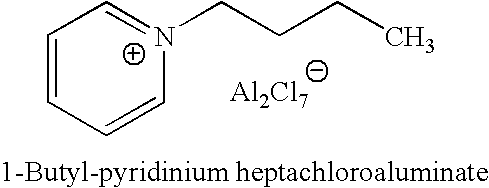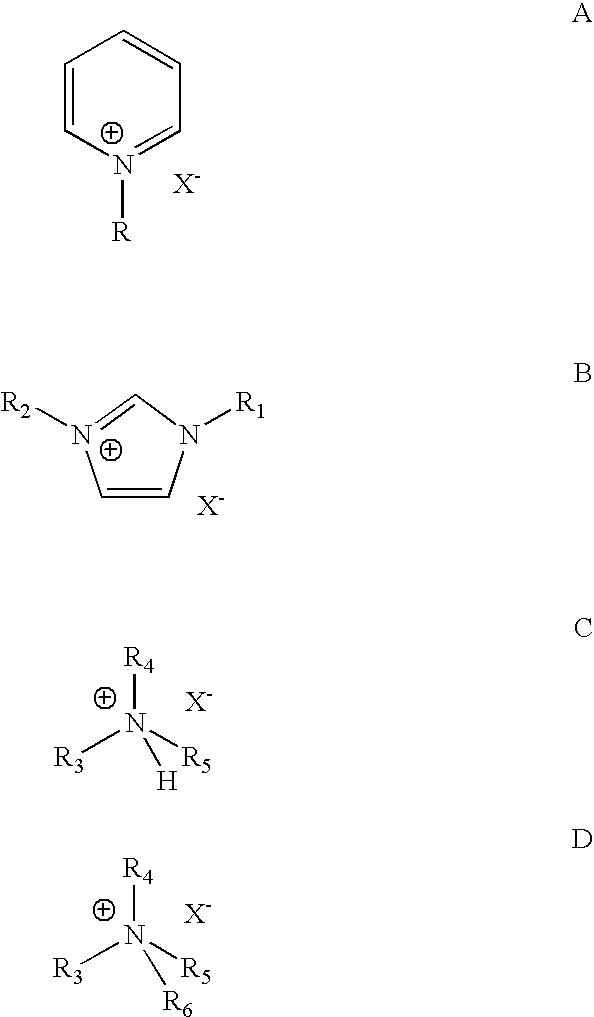Reduction of organic halides in alkylate gasoline
a technology of organic halides and alkylate gasoline, which is applied in the direction of organic chemistry, catalytic naphtha reforming, hydrocarbon preparation catalysts, etc., can solve the problems of no viable replacement of the current process in the commercial refinery, and the need for safer and environmentally friendly catalyst systems
- Summary
- Abstract
- Description
- Claims
- Application Information
AI Technical Summary
Benefits of technology
Problems solved by technology
Method used
Image
Examples
example
[0040]The product from the alkylation reaction of isobutane with butenes using N-butylpyridinium heptachloroaluminate catalyst was determined to have an alkyl chloride content of 422 ppm by X-Ray Fluorescence (XRF) Spectroscopy. To dechlorinate this product, a 4.5 gram sample of a hydrotreating catalyst consisting of Pd / Pt dispersed on a silica / alumina support diluted in 11 grams of silica carbide grit was loaded into a ⅜″ diameter tube reactor and reduced under flowing H2 at 5.3 cc / min at 200 psig and 250 F for 2 hours. The alkylate product was then passed downflow over the catalyst at a rate of 17 g / hr (LHSV=4 hr−1) at 400 F with an H2 flow of 35.6 cc / min and a pressure of 200 psig. A sample of the hydrotreated product was collected and determined to have an alkyl chloride content of 5.2 ppm by XRF spectroscopy.
PUM
| Property | Measurement | Unit |
|---|---|---|
| pressures | aaaaa | aaaaa |
| temperatures | aaaaa | aaaaa |
| pressure | aaaaa | aaaaa |
Abstract
Description
Claims
Application Information
 Login to view more
Login to view more - R&D Engineer
- R&D Manager
- IP Professional
- Industry Leading Data Capabilities
- Powerful AI technology
- Patent DNA Extraction
Browse by: Latest US Patents, China's latest patents, Technical Efficacy Thesaurus, Application Domain, Technology Topic.
© 2024 PatSnap. All rights reserved.Legal|Privacy policy|Modern Slavery Act Transparency Statement|Sitemap



